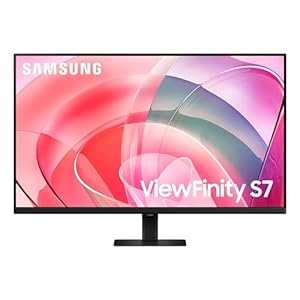If your kitchen is an absolute snake pit of appliance power cables, a trade group is working to end your woes. The Wireless Power Consortium, known for creating the standard for universal wireless charging on phones, has finalized a similar kind of magnetic induction charging for kitchen appliances called Ki. For folk like me who live in small apartments with little cooking space, there’s hope in the form of personal Ki charging plates.
The New Jersey-based Wireless Power Consortium is a multinational group whose members include the world’s largest tech and appliance makers. The Consortium’s big claim to fame is the proliferation of the Qi and Qi2 wireless charging standards. This is why you can buy third-party charging pads, which now work with not all (we’re looking at you, Google) but many mobile devices.
Ki is the same idea, though this form of magnetic induction charging supports a much higher wattage, up to 2.2 kW. Paul Golden, the WPC’s marketing director, told Gizmodo at IFA 2024 in Berlin that they weren’t aware of any appliance at this scale that wouldn’t get enough power from the Ki standard. According to the group’s white paper, the standard should be acceptable for multiple sizes of appliances, from air fryers to blenders and even crock pots. Devices that meet the standard need to operate at 90% or more efficiency as equivalent products with power cords. The Consortium claims any loss in usable power from this wireless charging is “negligible.”
There are quite a few benefits to this. For one, it cuts down on power cord clutter. It also means power cord fraying or shorts from any exposed wiring is less dangerous. WPC claims Ki should still work fine if you accidentally spill water on the charging surface. The Consortium further said that the standard mandates the surface or the device’s charging end should never be too hot to touch. If you remove the device, the charging surface stays warm, but not to the point it’s a danger.
Like Qi2, Ki uses NFC communication to tell the charging unit how much juice to give. As we’ve seen in WPC’s demos, you need to position the appliance right in the center of the charging plate. If your device is half-on or half-off, it won’t accept power or recognize the plate underneath it.
There’s some versatility with Ki. It can be built into new ranges, including Ki charging on one side and an induction stove on the other. The other option is for mountable charging stations that homeowners can install underneath their countertops. It’s rated to work through up to 3.8 cm, or 1.4 inches of stone or synthetic counterspace. Of course, you’ll either have to remember where the hell you stuck your wireless charging pad under the counter or paint a big X to mark the spot yourself. Ki won’t work through any metallic countertops.
This tech is still new, and member companies still need to build the supporting tech into their ranges and appliances. Unless you’re sitting on a pile of cash or are building a new home, you probably won’t see Ki-enabled countertops for some time. However, we’ll likely see single Ki pads, almost like a single induction burner with a power cord, coming sooner rather than later. Even without Ki built-in under your counter, these kinds of devices could potentially cut down on the mess of cords running through your kitchen. The WPC told us it had created a prototype of that single Ki pad, though it didn’t show it off for a demo in Berlin.
A movable plate may also be more versatile than one built into a countertop. I’m not the only home cook who prefers to get all his mise en place ready at the same time, though with very limited space to work. I like having my food processor off to the side, able to move it when necessary.
We also need to wait for companies to get on board. Golden told us several companies were already working on creating their own Ki-enabled devices. First on board seems to be appliance maker Midea with its upcoming Celestial Flex series. That includes a blender, steamer, and kettle, though there’s currently no information on availability or price. The WPC showed off a few other Ki-enabled designs from Philips, but those devices were test models and aren’t quite ready for prime time.
The WPC still needs to release specifications for this fall. Manufacturers can start submitting products for testing by the end of 2024, so we might start seeing these products on shelves soon enough.
Trending Products

SAMSUNG FT45 Sequence 24-Inch FHD 1080p Laptop Monitor, 75Hz, IPS Panel, HDMI, DisplayPort, USB Hub, Peak Adjustable Stand, 3 Yr WRNTY (LF24T454FQNXGO),Black

KEDIERS ATX PC Case,6 PWM ARGB Followers Pre-Put in,360MM RAD Assist,Gaming 270° Full View Tempered Glass Mid Tower Pure White ATX Laptop Case,C690

ASUS RT-AX88U PRO AX6000 Twin Band WiFi 6 Router, WPA3, Parental Management, Adaptive QoS, Port Forwarding, WAN aggregation, lifetime web safety and AiMesh assist, Twin 2.5G Port

Wireless Keyboard and Mouse Combo, MARVO 2.4G Ergonomic Wireless Computer Keyboard with Phone Tablet Holder, Silent Mouse with 6 Button, Compatible with MacBook, Windows (Black)

Acer KB272 EBI 27″ IPS Full HD (1920 x 1080) Zero-Body Gaming Workplace Monitor | AMD FreeSync Know-how | As much as 100Hz Refresh | 1ms (VRB) | Low Blue Mild | Tilt | HDMI & VGA Ports,Black

Lenovo Ideapad Laptop computer Touchscreen 15.6″ FHD, Intel Core i3-1215U 6-Core, 24GB RAM, 1TB SSD, Webcam, Bluetooth, Wi-Fi6, SD Card Reader, Home windows 11, Gray, GM Equipment

Acer SH242Y Ebmihx 23.8″ FHD 1920×1080 Residence Workplace Extremely-Skinny IPS Laptop Monitor AMD FreeSync 100Hz Zero Body Peak/Swivel/Tilt Adjustable Stand Constructed-in Audio system HDMI 1.4 & VGA Port

Acer SB242Y EBI 23.8″ Full HD (1920 x 1080) IPS Zero-Body Gaming Workplace Monitor | AMD FreeSync Expertise Extremely-Skinny Trendy Design 100Hz 1ms (VRB) Low Blue Gentle Tilt HDMI & VGA Ports







